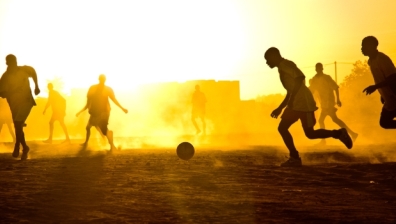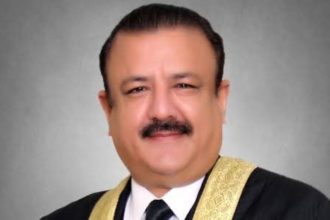There are no recognisable football fields, no players, and just a rusting goalpost at Pakistan’s Hawkesbay training centre, built with a $500,000 FIFA grant on a windswept plot by the Arabian Sea near Karachi, and officially completed two years ago.
In Nepal, goats graze on a rutted playing field near decrepit facilities at the Dharan football academy built with FIFA cash in the Himalayan foothills. The sole member of staff, a watchman, says he hasn’t been paid for a year.
A Reuters review of football development projects in these two South Asian countries shows they are littered with half-built and under-used facilities, despite receiving more than $2 million from the sport’s world governing body this year alone.
In recent weeks, Reuters reporters visited seven projects in Pakistan and Nepal that received FIFA money under its ‘Goal’ program – which funds football fields for youth academies, known as technical centres, and playing surfaces in stadiums.
They found that just one had an active full-time training program. Three had no proper playing fields.
During embattled outgoing President Sepp Blatter’s 17-year reign, FIFA has poured money into such projects in some of the poorest corners of the world.
Blatter has said the programs aim to make the world’s most popular sport accessible to all, but critics contend such grants have helped ensure he retained power with support from the heads of football associations in countries not known for their footballing prowess.
Blatter was re-elected president for a fifth time in late May, just days after seven FIFA officials were arrested on bribery-related charges as a result of a wide-ranging US investigation into corruption in FIFA.
In early June he said he would step down once a successor has been elected in February.
FIFA says it spends $200 million a year on development programs, partly through its ‘Goal’ program. It declined to comment about the specific cases of Nepal and Pakistan for this article, but said the majority of its ‘Goal’ projects around the world were successful.
“Over the past few years, FIFA has put in place stringent financial controls and audit checks to ensure, as far as we can, that the money we provide is spent on the projects we intend and is managed carefully,” a FIFA spokesman said.
“Only in a small minority of cases do we discover problems that give cause for concern.”
It isn’t certain how many of the more than 700 completed ‘Goal’ projects around the world meet FIFA’s objectives. But there are clearly examples where FIFA money has made a difference in developing football in poorer countries.
In Mogadishu, Somalia, for example, a dusty national stadium now boasts a smooth, bright green playing surface. In Costa Rica, the football association has used successive grants to build up a national sports centre.
“Look at the difference in so many cases of football associations not having headquarters or fields or technical centers before FIFA started investing in 1999.” said Jerome Champagne, a former FIFA deputy general secretary.
“Governments don’t suppress the (British) NHS (National Health Service) or the French social security because some people may cheat the system.”
Even so, there are places besides Nepal and Pakistan – parts of the Caribbean, for example – where ‘Goal’ resources don’t seem to have reached those they were aimed at or have not been properly managed.
A Swiss investigation into FIFA, running in parallel to the US probe, is looking at whether FIFA funds for development grants to regional and local football bodies around the world were siphoned off for personal gain, among other things, according to a source with knowledge of the probe.
The presidents of the football associations in both Pakistan and Nepal face leadership challenges from opponents who accuse them of corruption – which they deny.
Both noted that FIFA pays ‘Goal’ project funds directly to contractors without passing through the accounts of member associations – a mechanism designed to avoid corruption.
Ganesh Thapa temporarily stepped aside last year as president of the All Nepal Football Association (ANFA) during a FIFA investigation into misconduct. ANFA officials alleged he ran the association in a self-serving way, and drew attention to a PwC audit and other evidence that Thapa and his family took large payments from a former Asian Football Association chief.
Thapa denies any wrongdoing. FIFA’s Ethics Committee has not yet made a judgement in the case, and Thapa resumed his post in July after his replacement died from an electric shock.
Pakistan Football Federation (PFF) President Faisal Saleh Hayat is the focus of an investigation started in June by the country’s Federal Investigation Authority over allegations by a PFF faction that he embezzled funds and spent $1.4 million on foreign travel. He denies the accusations.
BEACH FOOTBALL
The architect’s drawings for the Hawkesbay Technical Centre show a lush green football field. Approval for the centre “for the training of national and youth teams” came in 2006, and FIFA’s website shows that its contribution of $505,958 was spent.
Hayat told Reuters the project was completed a year ago.
The centre, near Pakistan’s best known beach, consists of a sprawling building with a giant concrete football on the roof, surrounded by an uneven boulder-strewn field. There is no grass. A guard declined to let Reuters reporters inside.
Rahim Baloch, treasurer of the Sindh Football Association, which covers Karachi, said the national team the facility was built for has never trained there, though local clubs train at the site. On subsequent visits, Reuters reporters found the gate locked and the desolate premises abandoned.
“It’s not playable. It’s a shame there’s such a big place for football that’s not functional yet,” said Yaqoob Baloch, a club-level football coach in Karachi.
Reuters eyewitness reporting and comments from officials show that of eight ‘Goal’ projects in Pakistan built with $2.6 million of FIFA funds, the only one completed and fully functional is a $481,650 office built in Lahore as the PFF’s headquarters.
Hayat had previously told Reuters that four of the eight projects were complete – the office in Lahore, and technical centers in Karachi (Hawksbay), Quetta and Abbottabad. He did not respond to phone calls and messages querying the discrepancy between what he said and what Reuters reporters saw and heard from officials.
The center in Quetta, in the southern Balochistan province, has lodgings, a canteen and an office, but nowhere to play football.
“The construction of a football ground is part of the project and will be started soon,” said Haji Saeed Taku, the General Secretary of the Balochistan Football Association.
The Abbottabad center has a playing field, offices and lodgings for visiting players, but no electricity, gas or water connections.
While the inside looks smart, the contractors violated an agreement to use imported materials, including doors, instead replacing them with low-quality local materials, said Adil Khan Jadoon of the District Football Association Abbottabad, which represents local teams.
“We raised the issue of sub-standard materials and the poor quality of work, but nobody listened to us,” he said.
“We are really grateful to FIFA for providing funds to promote football, but it’s very painful to admit that it didn’t help promote the game here as the funds weren’t properly utilised,” he said.
Also read:Pakistani footballers likely to qualify for top round






